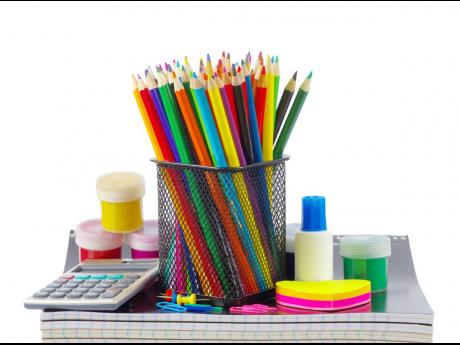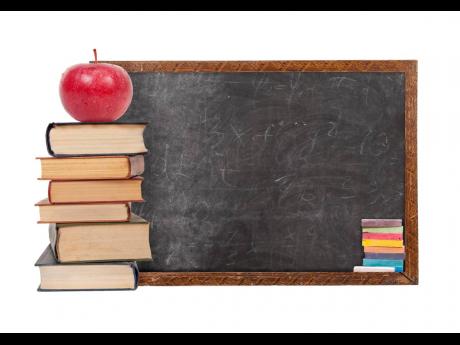Eliminate fear! fear! Eliminate - Making mental adjustments to return to the classroom
“Because these things will change
Can you feel it now?
These walls that they put up to hold us back will fall down.
It’s a revolution, the time will come
For us to finally win
And we’ll sing hallelujah, we’ll sing hallelujah.”
– Taylor Swift, Change
IN EARLY March, the formal education system was disrupted by the COVID-19 pandemic, which forced the closure of schools to prevent the spread of the virus. As a result, students had to adjust to new norms of learning via various media, such as Zoom, Google Classrooms, and WhatsApp.
But after three months of operating in a virtual classroom, some students have become weary of this arrangement. Come tomorrow, however, those sitting the Caribbean Secondary Education Certificate and Caribbean Advanced Proficiency Examinations evaluations will be returning to the formal classroom setting as they prepare for their external examinations.
Younger students will follow suit in September after almost half a year away from their regular schooling, and it will take some level of mental preparation to get them and their parents readjusted.
Psychotherapist Vassell George O’Gilvie told Family & Religion that whether it is examinations or back-to-school in September, students will be concerned about their mental and physical health, because of COVID-19, while worrying about their performance in school.
“This dichotomy creates a mental issue which will be reflected in their adjustment and cause severe anxiety disorder. Students will become anxious because of uncertainty. Many of them will experience excessive and/or unrealistic worry about their safety, which can affect their readiness for examinations,” O’Gilvie said.
Motor Tension
He stressed, also, that students might experience motor tension such as restlessness, tiredness, and muscle tension, while others may experience autonomic hyperactivity, which generally results in palpitations, shortness of breath, nausea, and even diarrhoea.
“Equally important, students may experience hypervigilance. For example, they may feel as though they are constantly on edge and experience concentration difficulties and, in effect, poor performance,” he said.
Having highlighted the negatives, O’Gilvie said that there should be no alarm as those mental-health issues can be counteracted by students learning to implement calming strategies and skills to reduce overall anxiety and manage symptoms.
“It’s all about engaging in some relaxation exercises and skills. For example, students can use progressive muscle relaxation or guided imagery, which slow the diaphragmatic breathing,” he shared.
It won’t hurt, he said, for students to understand that sometimes worry is a form of avoidance of fear (thinking they will contract and die from COVID-19). This fear, he said, creates chronic tension.
Parents, too, O’Gilvie said, can play their part in making the transition to the classroom setting easier by helping to eliminate fear from their children’s minds and replacing it with positive, realistic, and empowering talk.
For younger students who return to school in September, he said, they will have even more adjustments to make.
“Younger students will suffer some form of adjustment and anxiety disorder upon returning to the classroom. They might also have a harder time transitioning to a formal setting because, as you know, education at home and possible parenting expectations might not be as intense as with teachers at school,” he pointed out.
Although many were still engaged in lessons with their teachers, the reality is that some missed out on that opportunity due to the unavailability of the required learning tools and Internet access.
It is for that reason, O’Gilvie said, that teachers will have to be prepared for the transition and to work with the students individually at the level where they are.
“Some students will certainly do better than others. This depends on the resources that they had at home and the level of supervision. Teachers will have to show some empathy and treat each student according to their level of maturity. The parent will also need to be supportive and work closely with the teacher to help with a smooth transition from home to the classroom,” he said.
O’Gilvie added that although returning to school will be a challenge, it will be very possible as long as teachers, parents, and students work together.
IN EARLY March, the formal education system was disrupted by the COVID-19 pandemic, which forced the closure of schools to prevent the spread of the virus. As a result, students had to adjust to new norms of learning via various media, such as Zoom, Google Classrooms, and WhatsApp.
But after three months of operating in a virtual classroom, some students have become weary of this arrangement. Come tomorrow, however, those sitting the Caribbean Secondary Education Certificate and Caribbean Advanced Proficiency Examinations evaluations will be returning to the formal classroom setting as they prepare for their external examinations.
Younger students will follow suit in September after almost half a year away from their regular schooling, and it will take some level of mental preparation to get them and their parents readjusted.
Psychotherapist Vassell George O’Gilvie told Family & Religion that whether it is examinations or back-to-school in September, students will be concerned about their mental and physical health, because of COVID-19, while worrying about their performance in school.
“This dichotomy creates a mental issue which will be reflected in their adjustment and cause severe anxiety disorder. Students will become anxious because of uncertainty. Many of them will experience excessive and/or unrealistic worry about their safety, which can affect their readiness for examinations,” O’Gilvie said.
Motor Tension
He stressed, also, that students might experience motor tension such as restlessness, tiredness, and muscle tension, while others may experience autonomic hyperactivity, which generally results in palpitations, shortness of breath, nausea, and even diarrhoea.
“Equally important, students may experience hypervigilance. For example, they may feel as though they are constantly on edge and experience concentration difficulties and, in effect, poor performance,” he said.
Having highlighted the negatives, O’Gilvie said that there should be no alarm as those mental-health issues can be counteracted by students learning to implement calming strategies and skills to reduce overall anxiety and manage symptoms.
“It’s all about engaging in some relaxation exercises and skills. For example, students can use progressive muscle relaxation or guided imagery, which slow the diaphragmatic breathing,” he shared.
It won’t hurt, he said, for students to understand that sometimes worry is a form of avoidance of fear (thinking they will contract and die from COVID-19). This fear, he said, creates chronic tension.
Parents, too, O’Gilvie said, can play their part in making the transition to the classroom setting easier by helping to eliminate fear from their children’s minds and replacing it with positive, realistic, and empowering talk.
For younger students who return to school in September, he said, they will have even more adjustments to make.
“Younger students will suffer some form of adjustment and anxiety disorder upon returning to the classroom. They might also have a harder time transitioning to a formal setting because, as you know, education at home and possible parenting expectations might not be as intense as with teachers at school,” he pointed out.
Although many were still engaged in lessons with their teachers, the reality is that some missed out on that opportunity due to the unavailability of the required learning tools and Internet access.
It is for that reason, O’Gilvie said, that teachers will have to be prepared for the transition and to work with the students individually at the level where they are.
“Some students will certainly do better than others. This depends on the resources that they had at home and the level of supervision. Teachers will have to show some empathy and treat each student according to their level of maturity. The parent will also need to be supportive and work closely with the teacher to help with a smooth transition from home to the classroom,” he said.
O’Gilvie added that although returning to school will be a challenge, it will be very possible as long as teachers, parents, and students work together.



